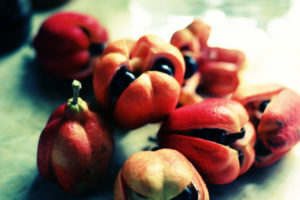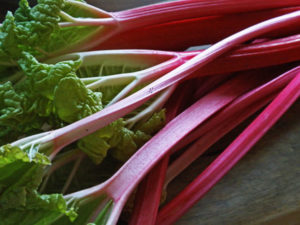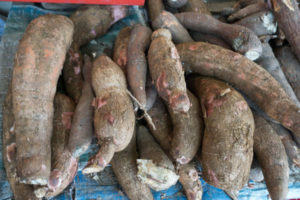
By Fabienne Lang
You jolt upright in the middle of the night, sweating, nauseous, and with a cramping stomach forcing you into a fetal position. You muster the strength to drag yourself to the bathroom for the inevitable hours of misery ahead of you.
You guessed it: You have food poisoning.
Unfortunately, almost any food, from undercooked chicken to unwashed lettuce can lead you to hours of pain and torment, and in some extreme cases, to your death.
The WHO estimates that, every year, approximately 600 million people fall ill after eating contaminated food, resulting in 420,000 deaths.
Of these 600 million people, some fall ill because they eat food that has been improperly prepared or handled, or was contaminated during processing, some have severe allergic reactions to ingredients, and a very few become ill after testing their limits by voluntarily eating something that ends up being dangerous for them.
Chomping down on the world’s hottest chili and ending up in the hospital? It happens more than you may think.
But it’s not just spicy or exotic delicacies from around the world that can knock you sideways after one bite. You’d be surprised by the number of staple foods that could kill you if not prepared properly.
1. Fugu, AKA Pufferfish
Kicking off the list of dangerous foods is the exotic Japanese delicacy, fugu, or pufferfish. It’s the most poisonous food in the world and has to be intricately prepared to prevent it from killing its recipient.
Fugu contains lethal amounts of the poison tetrodotoxin in its organs, especially the liver. The poison is a sodium channel blocker and paralyzes the muscles while the victim remains fully conscious. Eventually, the victim becomes unable to breathe and dies from asphyxiation.
These contain oxalic acid, which is toxic to the kidneys and can even kill you if you consume too much of it. A 143 pound (65 kg) adult would need to eat somewhere between 9 to 18 lbs (4 to 8 kg) of rhubarb leaves for this to happen, but even if only a few leaves are ingested, you would likely suffer a number of unpleasant side effects, like a burning throat and mouth, nausea, difficulty breathing, diarrhea, and more.
There are two types of cassava: sweet and bitter. Bitter cassava is harder but has a much higher cyanide content. Depending on whether the cassava is sweet or bitter, its preparation for safe consumption differs. Sweet cassava only needs to be cooked to be safe to eat, whereas bitter cassava needs to be grated, soaked, and then cooked to reduce the cyanide levels.
7. Red kidney beans
Perhaps the most surprising food on this list is the red kidney bean. This staple pantry fare is a favorite in many dishes as it provides protein, fiber, vitamins, and minerals. But in their raw or undercooked form, red kidney beans are highly toxic, because of high amounts of phytohaemagglutinin.
Phytohaemagglutinin is a plant protein that causes red blood cells to clump together, leading to symptoms of moderate to severe food poisoning, and can even damage your gut. In order to reduce the level of phytohaemagglutinin in the beans, they need to be soaked and then boiled for a sufficient time (exact times vary, depending on the cooking method).
Food safety
As you see, proper food preparation, storage, and handling can be a question of life and death, and even in milder cases of food poisoning, can lead to some very unpleasant hours spent near a toilet.
To minimize cases of food poisoning, countries have put measures in place to optimize food safety.
For instance, in the U.S. the FDA is responsible for protecting public health by ensuring the country’s food supply (excluding meat from livestock, poultry, and processed egg products) is safe. The agency carries out tests and has regulations in place to ensure food is grown, packaged, and stored in a safe way.
Other organizations, such as the Food Safety and Inspection Service, ensure that the U.S.’s commercial supply of meat, poultry, and processed egg products is safe, wholesome, and correctly labeled and packaged.
The CDC also plays a part in keeping updated records, and carrying out investigations of foodborne illnesses in the U.S. to prevent future food-related safety issues.
For individuals who want to avoid all-nighters curled around the toilet bowl, or a panicked visit to the hospital, make sure to always carefully check how to safely wash, cook, store, and handle your food. And just to be safe, maybe steer clear of the seven aforementioned dangerous foods unless they are properly prepared.



